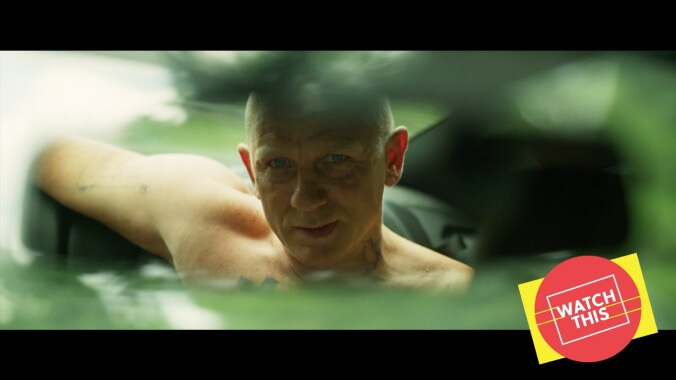Logan Lucky is the Steven Soderbergh version of a Coen brothers caper

Watch This offers movie recommendations inspired by new releases, premieres, current events, or occasionally just our own inscrutable whims. This week: The fourth season of FX’s small-screen Fargo starts, so we’re singling out “Coenesque” movies, i.e. ones influenced by or imitative of the work of those famous sibling filmmakers.
Logan Lucky (2017)
How seriously can one take a movie that features characters with names like Joe Bang and Max Chilblain? That the former is a rural West Virginia demolition expert played by a bleach-blond, flamboyantly accented Daniel Craig, and the latter an obnoxious English energy drink magnate portrayed by Seth MacFarlane (in what appears to be a combination John Oates/Michael Jackson costume), does not exactly impart a sense of gravitas on to Logan Lucky, the laidback caper comedy that marked Steven Soderbergh’s return to movies after a self-imposed “retirement.” And that’s without even mentioning the hapless Logan boys: the hangdog amputee Clyde (Adam Driver) and the limping Jimmy (Channing Tatum), who hatches a plan to rob a pneumatic tube system under the Charlotte Motor Speedway in Concord, North Carolina, after losing his job “for liability reasons involving insurance.”
This jokey tone is in many ways typical Soderbergh. The most prolific and irreverent of major American filmmakers has a knack for infusing unpretentious material with his signature intellectual concerns and economic anxieties; one could also cite examples from Ocean’s Thirteen (an unsubtle pro-labor movie) to Unsane (a shlockish, shot-on-an-iPhone thriller about medical billing). Logan Lucky is in fact awash in the Soderberghiana of systems and swindles, conmen and confident women, underdogs and byzantine movements of money, with the Coca-Cola 600 NASCAR race replacing Vegas and industry trade shows as the backdrops of tacky, sponsored all-American spending, with the Logans’ downtrodden digs providing contrast.
Like the darker and more anxious The Informant!, it’s also a Soderbergh film that betrays some commonalities with the Coen brothers—mostly in its offbeat characters and ear for phrasing and accented delivery. As experts in pastiche, the Coens can hardly claim a copyright on the schemes and foibles of the American ignoramus, and they have always shared with Soderbergh a fondness for cons, tangled plots, aliases, and a distaste for snobs. (Playing the auteur swap game, one might even imagine Burn After Reading as a Soderbergh film.) But “Coenesque” is an undeniable quality that one often finds in other movies, not all of which are imitations. This is in part because the Coen style isn’t a collection of tics so much as a refined concentration of specifics and a belief in cosmic irony over karma, producing stories filled with characters, turns of events, and self-inflicted problems that could only exist in the film’s particular place and time.
If Coens-y elements are most easily spotted in movies with distinct regional inflections, it’s because the sibling duo are masters of comedic verisimilitude. Logan Lucky—which was written by Soderbergh’s wife, Jules Asner, under the pseudonym “Rebecca Blunt”—wasn’t actually filmed in West Virginia, but like a number of his more experimental works, it sometimes gives the appearance that a cast and camera have simply been dropped into a undressed location in off-the-rack clothes. No one would ever mistake it for anything but a post-digital Soderbergh film; it has those the simultaneously pragmatic and off-kilter shot compositions and that quirky preference for static camera angles and extremely shallow depth-of-field.
One might even say that, on the level of creative philosophy, Soderbergh and the Coens brothers share a kind of dispassion, though it filters out in different ways. For Soderbergh, it’s a matter of framing. That he is capable of being an extremely clinical filmmaker is, ironically, an important factor in his cheeky, self-aware sense of humor; that his films relish nothing more than explaining how money gets moved and collected (literally in the target of this film’s heist) is integral to their depictions of stubborn, wily characters struggling against unfair forces of business and finance. In the Soderbergh universe, where everyone is getting fleeced, the most heroic act is to band together and cheat the system. The harebrained truck-and-camo West Virginians of Logan Lucky are the butt of many jokes, but it’s very clear where the movie’s affections lie.
Availability: Logan Lucky is currently streaming on Amazon Prime. It can also be rented or purchased from Google Play, iTunes, YouTube, Microsoft, Redbox, AMC, DirectTV, or VUDU.